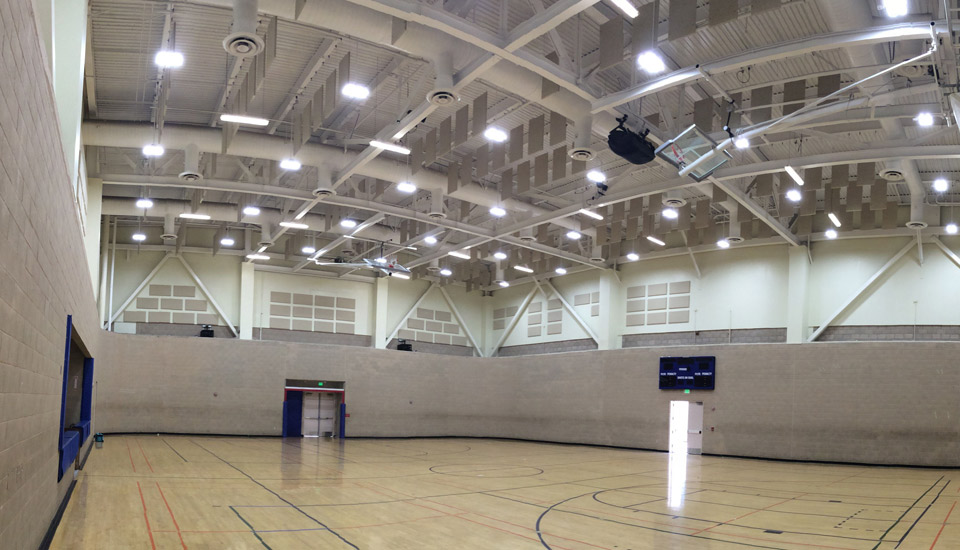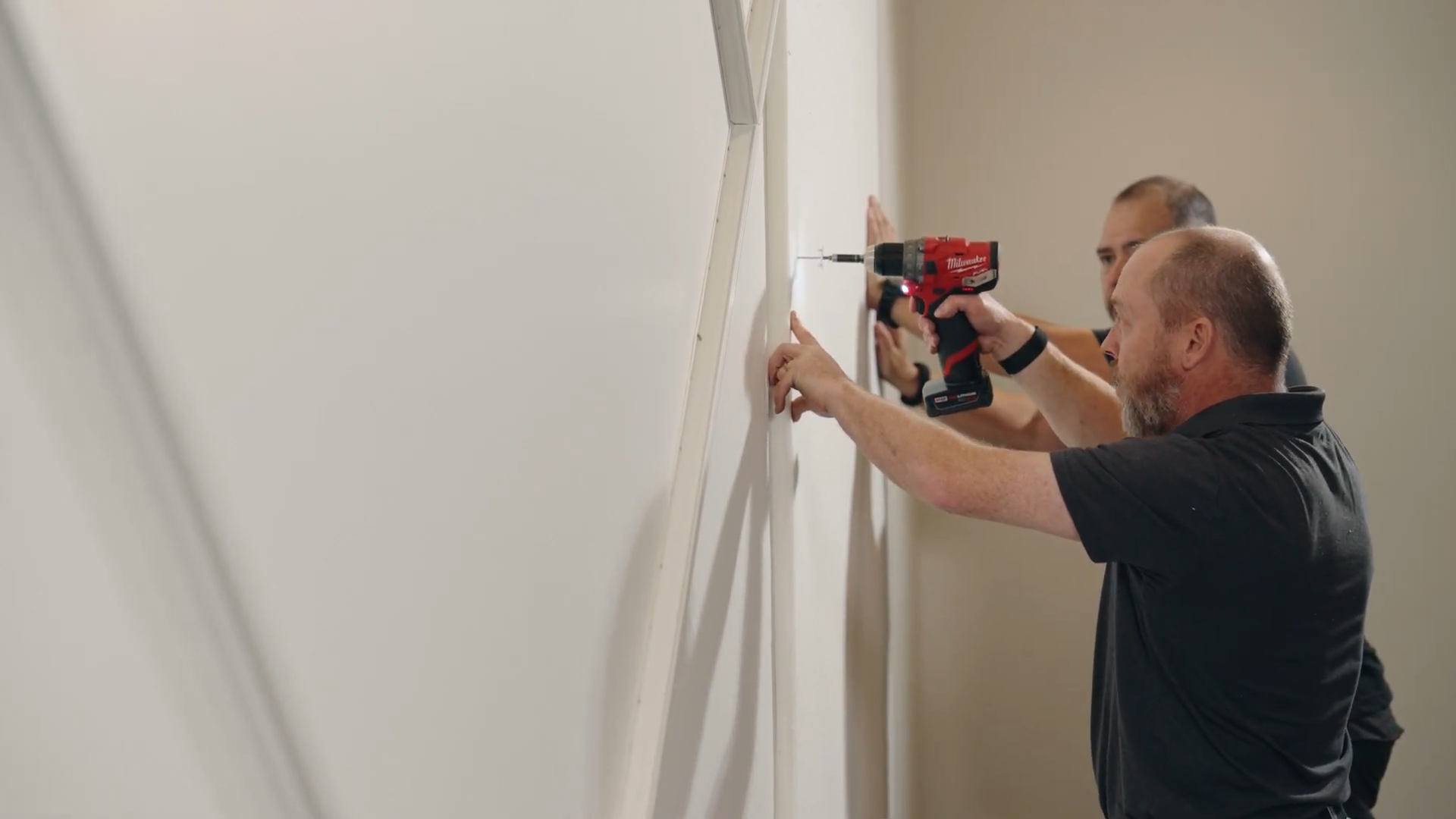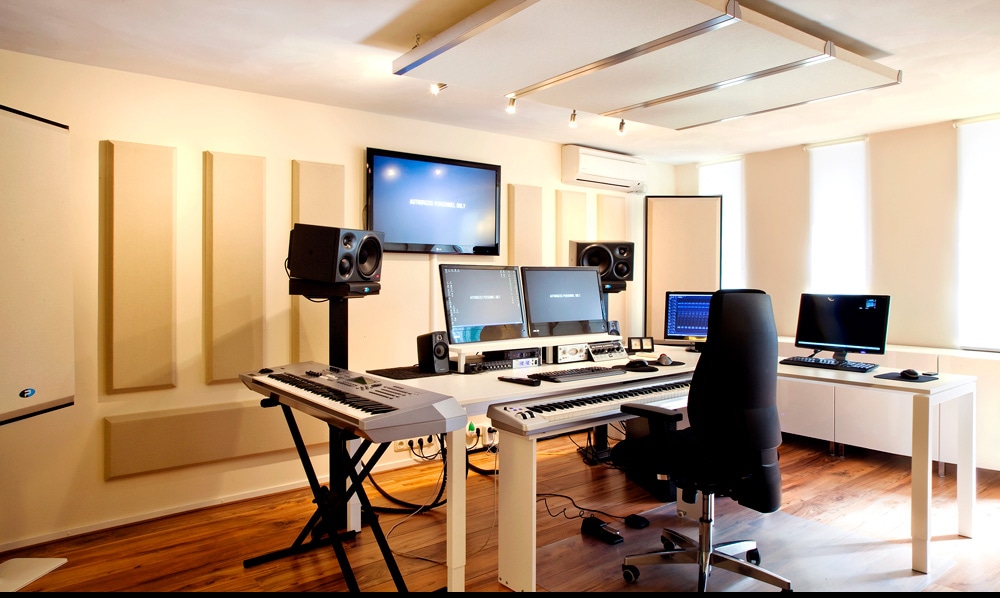A high ceiling is great for making a room feel larger, and interior designers and developers often incorporate high ceilings into homes. However, while they’re a great choice design-wise, they also provide sounds with a longer path of travel, resulting in more noise in the room. Here’s a look at how to reduce noise in a room with a high ceiling.
Cause
In very tall spaces, it’s common to encounter a ceiling made of steel decking or concrete. These building materials are considered to have low absorption coefficients. In other words, they are highly reflective and do not absorb sound well. These two physical characteristics of a room will increase the amount of time a particular sound will remain audible, even after the original sound source has stopped.

As sound travels towards the ceilings, it will encounter these highly reflective surfaces. Only a very small amount of energy absorbs in the surface, and the sound wave continues travelling within the room. The technical term for this is the RT60 value of the room, which describes how long it will take for the residual sound to decrease in volume by 60dB after the original sound source has stopped. It normally requires a sound source of 100dB to accurately measure this value, as a typical noise floor level is 40-45dB (office noise).
Guidelines
There are some published guidelines on the optional suggested RT60 values for various rooms depending on their purpose of use. Primarily, for smaller rooms (compared to a cathedral, church or concert hall) these are weighed to provide greater speech intelligibility. So, how can we reduce the RT60 of a room with high ceilings? There are two main solutions: lower the ceiling by installing an acoustic ceiling (ceiling tiles), or add broadband absorptive material by way of ceiling clouds or baffles.
Different forms of absorption materials are available, but some of them are not certified for use in public assembly spaces due to not meeting Class 1/A fire/burn and smoke safety requirements.We recommend high-density glass wool (6lbs/ft3), which is dense enough to absorb lower frequencies and is not too rigid to reflect high frequencies.
Ceiling Coverage
The right amount of coverage on the ceiling is also important, we recommend a minimum of 40% overall treatment required for the room. However, covering the ceiling with acoustic treatment could be the only practical solution in some cases. In this situation, you will have to install 100% of the acoustic treatment on the ceiling. This can be challenging, primarily due to the lack of usable space, and ceiling obstructions such as lighting, ducts, air registers, speakers, sprinkler heads, etc.
A combination of horizontal ceiling clouds (Nimbus) and vertical ceiling baffles (Saturna) would be a good compromise. The Nimbus clouds will take care of reflections between the ceiling and floor; the Saturna baffles will reduce the sound travelling from side to side within the ceiling area. We recommend you stagger the height of Saturnas. Sometimes you may have to choose one or the other, based on the situation. Lowering the Nimbus from the ceiling will provide another advantage of dual absorption, by using the back of the panel to absorb stray reflections that reflect back from the ceiling. You could also increase the panel’s absorption performance in the lower frequencies.

Final Steps
Always take care when embarking on this type of project, as you must not violate any code regulations. You should also check with your local fire marshal and inform them of what you are planning to install. If you’re looking to reduce noise in a room with a high ceiling, be sure to contact us today for a free quote. Our team of experienced acousticians is here to help.









